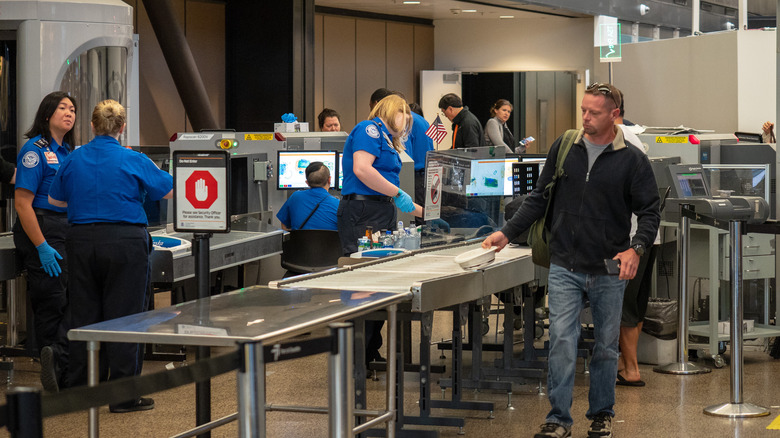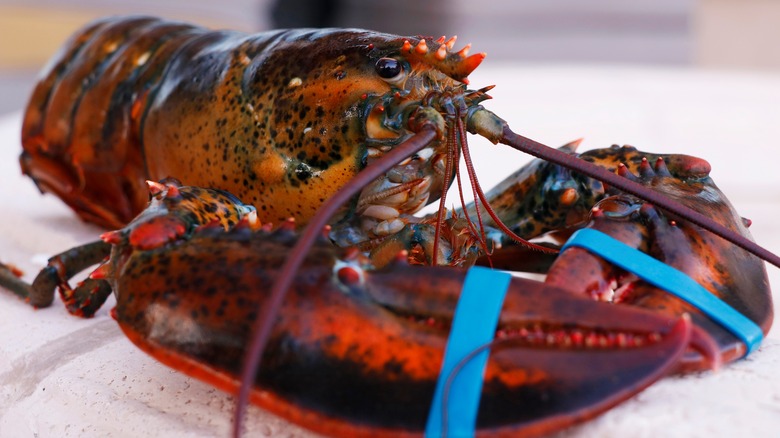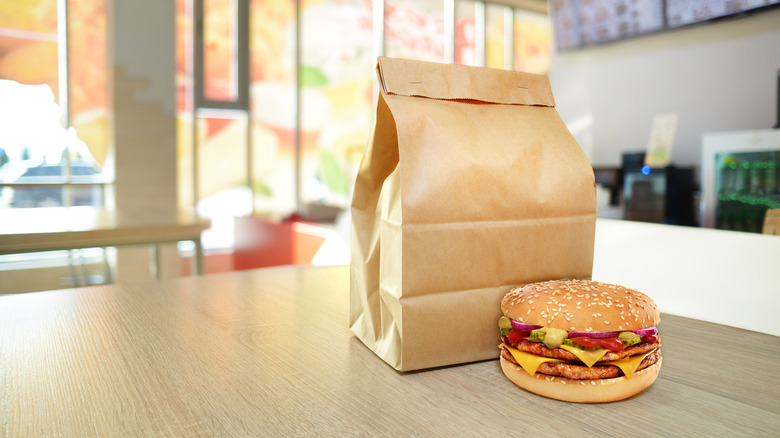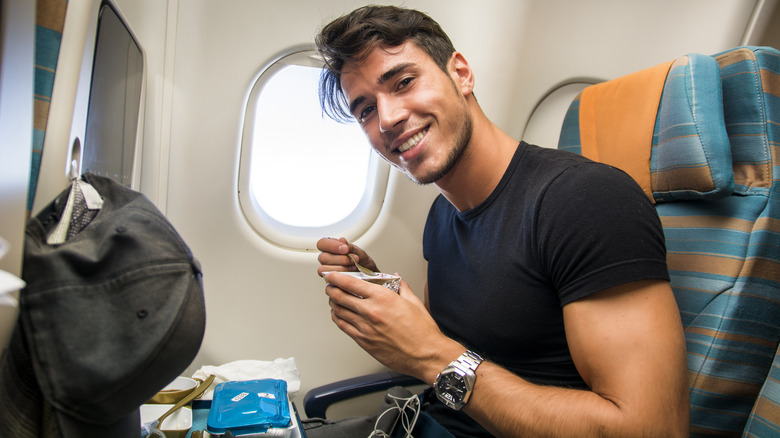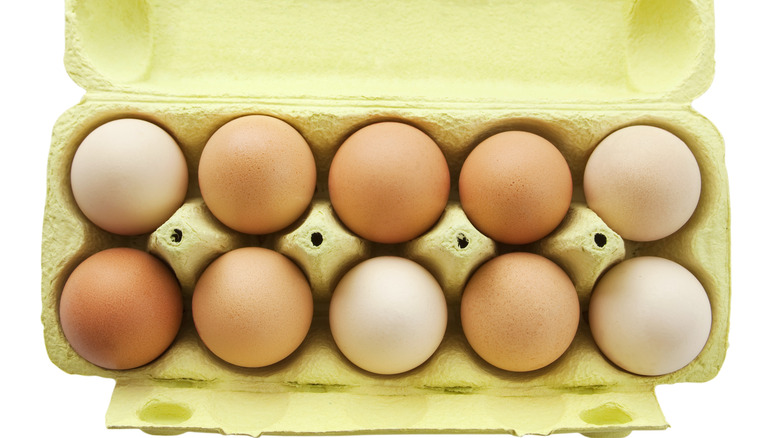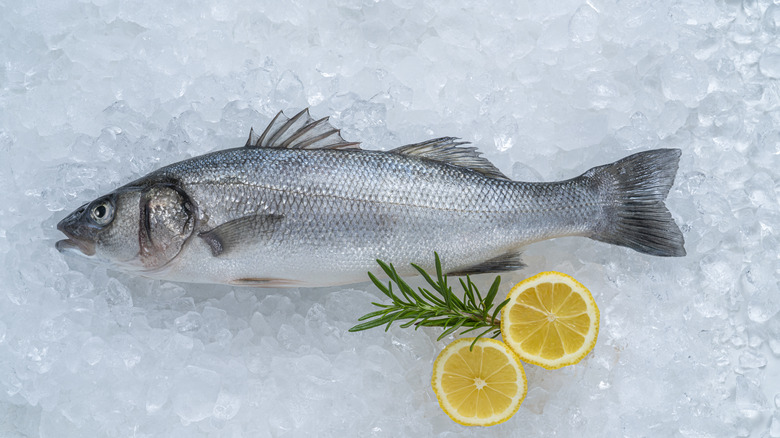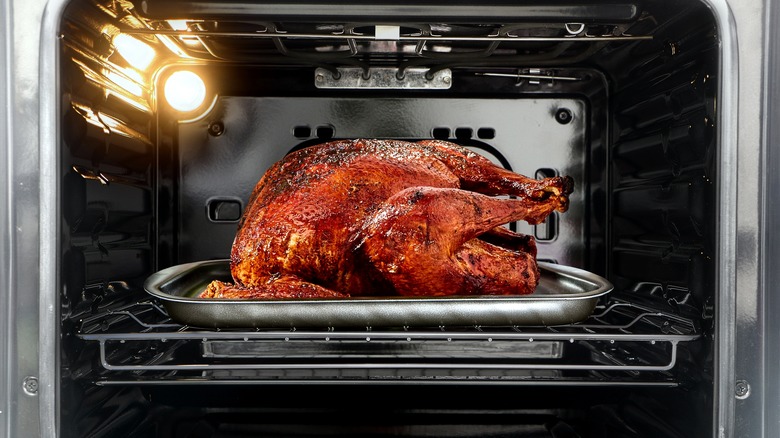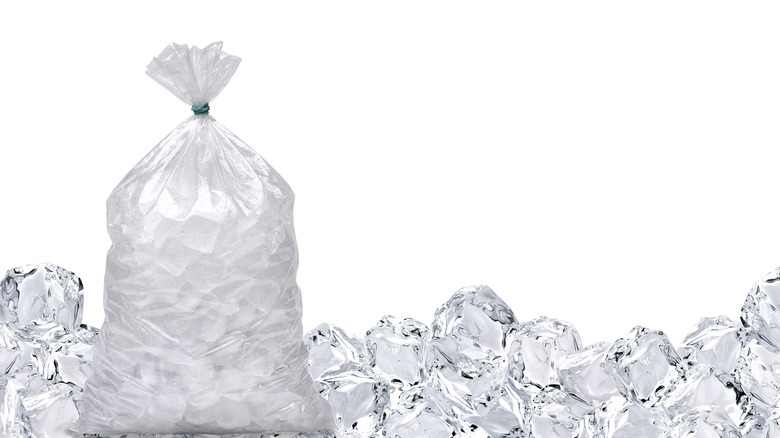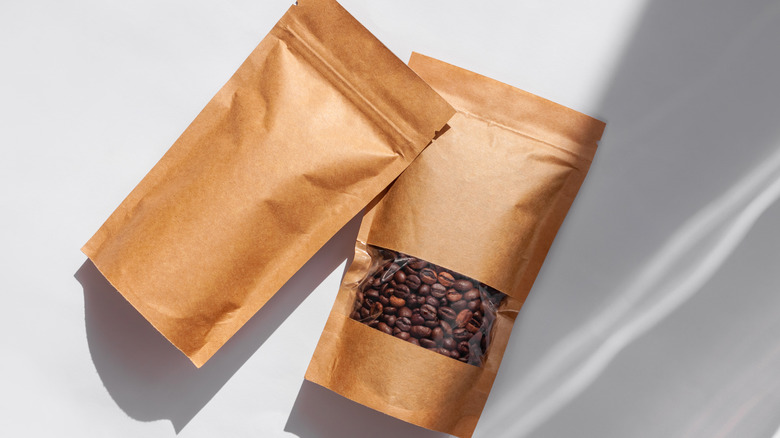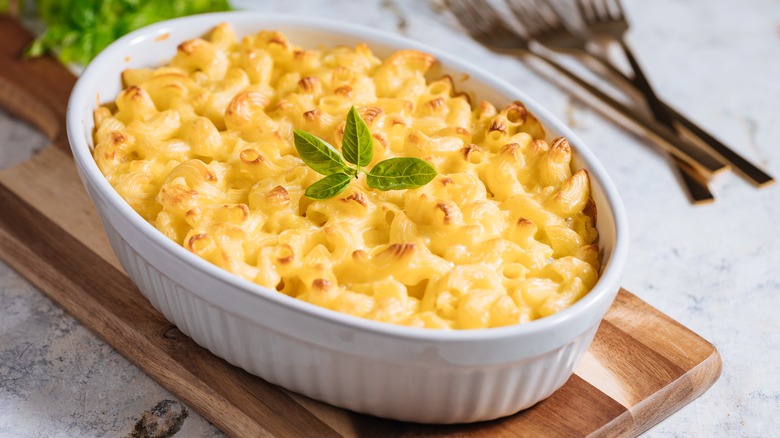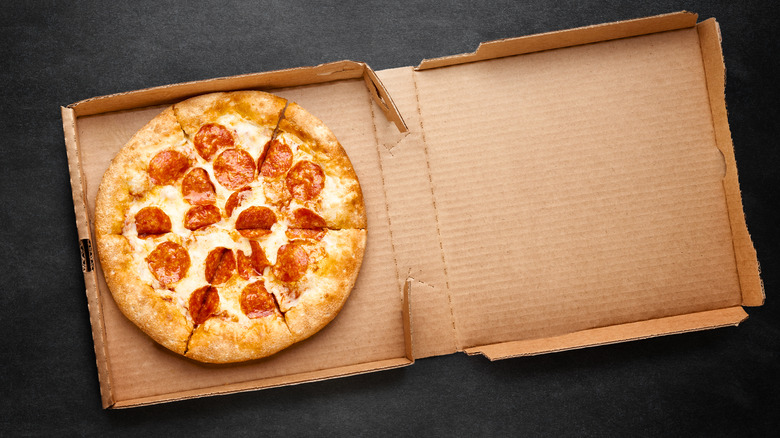11 Surprising Foods You Can Carry-On Through TSA
When it comes to packing food in your carry-on, the universal rule most people know and absolutely must follow is the no liquid, gels, or aerosols rule over 3.4 ounces. That includes spreads like peanut butter and cream cheese, as well as drinks like smoothies or milkshakes. There are plenty of foods we know we cannot take through security, but what about the foods that are TSA-approved?
There are some obvious choices like chopped fruits and veggies, baby food, or deli meat, but did you know you could carry an entire fish, alive or dead, in your carry-on? Ultimately, most decisions are left to the Transportation Security Administration's (TSA) officer on duty at the time you're passing through security, but as long as you take the right precautions when packaging and storing the food item in question, chances are you'll make it on board with any of the obscure and surprising items from our list below.
Live lobster
With so many secure shipping methods available, we're not sure why anyone would want to fly with a live lobster in their carry-on, but that's not to say it can't be done. Whatever your reason for traveling with a living crustacean, you'll likely make it through the TSA checkpoint, but trying to smuggle your live lobster on a plane might leave you in a pinch. Before you travel with a lobster, be sure to check your specific airline's regulations for bringing a sea creature on board, as each company has their own set of rules beyond the TSA guidelines. TSA specifies that the live lobster should be contained in a clear, plastic, leak-proof bag or storage container so an officer can get a good look at your living ocean dweller.
If your lobster container shifts during flight, you'll want to check your sea bug for signs of life as soon as you arrive at your final destination. If your lobster succumbed to turbulence during your flight, you might want to kiss your lobster feast goodbye. Consuming lobster after it's dead can be poisonous. Many forms of shellfish contain harmful bacteria in their flesh that begins to multiply as soon as the crustacean is dead. Best to be on the safe side of food poisoning by making sure your lobster still has a pulse before dropping it in a pot of boiling water.
Burgers
Whether you're trying to avoid pricey airport fast food, don't have the time between flights, or you simply want to indulge in one final In-N-Out Burger before leaving the West Coast, the good news is you can absolutely bring a juicy, saucy burger through TSA. The easiest way to carry food on board your flight is to make sure your item is in solid form, and a burger certainly passes the solid test.
Another key to bringing a homemade burger on your flight is to package it appropriately. A sandwich wrapped in foil or any other packaging that might obstruct TSA's ability to screen your item will probably land your burger in the hands of a hungry officer. The best way to package it is to wrap it in paper or, better yet, a plastic sandwich bag or clear container. The only other rule you should adhere to concerns the sauce.
You don't want your burger to be soggy by the time you make it to your gate, so you might choose to put your sauce on the side. Be sure any liquids you pack on the side with your burger are 3.4 ounces or less. A couple of standard-sized sauce packets will pass the checkpoint, but a squirt bottle of ketchup is excessive.
Yogurt
Even something as small as a yogurt can be costly at an airport, so it's always a good idea to save yourself time and money by packing your own portable snacks for the plane. When it comes to yogurt, the standard size under TSA regulations is 3.4 ounces or less. Yogurt may not appear to be a liquid like water, but the general rule is if you can spill it, spread it, spray it, pour it, or pump it, and it's over 3.4 ounces, you won't be permitted to carry it on with you. (Remember that you can always pack larger servings of your favorite snacks in your checked luggage.)
This rule also pertains to items like peanut butter and cream cheese, which are spreadable and can only be brought in your carry-on if they are travel-sized, for example, squeeze packets of Justin's peanut butter or individual 3.4-ounce containers of cream cheese.
Fresh eggs
Perhaps you're a poultry farmer looking to bring fresh eggs on your vacation or you want to bring the fruits of your labor to your loved ones, but you don't want to raise Cain when you pass through TSA security. Traveling with fresh eggs may be delicate and risky, but it's not against the airport security rules so long as you package them correctly.
According to TSA guidelines, you'll want to separate your eggs from your carry-on when you pass them through the X-ray machine so they don't obstruct the officer's view of other items in your bag. A plastic carton is probably your best bet as it tends to be the most durable for travel, and it's also in line with TSA rules. It is worth noting that there is a disclaimer on the TSA website that states it is ultimately up to the TSA officer to allow or object to any items in your carry-on, so there's always a chance you'll be scrambling to get your eggs on board.
Raw fish
Bringing raw fish on an airplane – whether dead or alive – might be a stinky endeavor, but it is a totally acceptable one, at least as far as TSA is concerned. That said, how your travel companions, flight attendants, and the other passengers might feel about it is another story, but we're not here to dictate what's socially acceptable or not.
Whether you're returning from a fishing trip in Alaska or you caught some shellfish off the coast of Maine, you'll want to make sure you package your fish according to TSA's special instructions for seafood. If you're carrying your fish on ice, be sure it is completely frozen when you go through the security checkpoint. If there's any liquid in the bag or container, your fish will not be permitted to glide on through. If you pack your fish on dry ice, make sure your dry ice pack is five pounds or less.
If you're bringing a live fish along in your carry-on, you are allowed a bag of water larger than the usual 3.4 ounces, but it will still need to be leakproof and see-through to pass the TSA inspection.
Whole turkey
With the price of groceries constantly on the rise, buying a whole bird in a vacation destination may be out of your price range, but perhaps a turkey dinner is a nonnegotiable for you as well. Sounds like you're in a jam, but we have some good news. Whether it's a holiday gathering, or you're just craving a Thanksgiving entrée, you can bring a frozen or cooked whole turkey in your carry-on luggage, according to TSA regulations.
Whether the turkey is frozen or cooked, you'll want to make sure you're traveling with food safety in mind, so be sure to package it appropriately with dry ice, or in tightly-concealed plastic clear-wrap packaging. If you plan to gobble down your turkey smothered in gravy, you'll need to pack the gravy in your checked bag, as that is considered a liquid and won't pass through the security checkpoint. Cranberry sauce is another turkey side dish that won't be permitted in your carry-on.
Ice
Whether it's frozen water or a frozen liquid of any other kind, TSA permits ice and other frozen items past security, as long as it has started the process of melting. This means you'll have to get creative with your packing and timing to make it through the security checkpoint. If your frozen item is less than 3.4 ounces and is starting to melt, you'll still be permitted to carry it on board. However, if you're trying to smuggle in a smoothie or frozen yogurt that is over 3.4 ounces, and it's beginning to turn into a slush or liquid, you will not be allowed to pass through security.
If you're trying to bring something like frozen meat on board that is being chilled with dry ice, TSA allows you to bring up to five pounds of dry ice through security so long as the package is marked appropriately and has proper ventilation.
Coffee beans
If you're a coffee connoisseur or if you're returning from a coffee plantation visit in the Hawaiian islands, you might be under the impression you need to smuggle your beans on board. That's not the case. TSA regulations permit you to bring coffee grounds and beans in your carry-on so long as you pack them in a way that doesn't obstruct other items in your bag, or you may simply remove them from your bag when passing them through the security X-ray machine.
TSA regulations only apply to domestic travel, and transporting coffee beans from an international destination into the U.S. might be another story, depending on where you're coming from. In general, customs generally allows passengers to carry roasted and unroasted beans in their checked luggage or carry-ons as long as they declare the beans, but coffee seeds, coffee plants, and whole coffee cherries are not prohibited due to risks to endangered species and exotic fruit fly infestations.
Baked goods (with the exception of cupcakes)
Every state in the U.S. claims to have the best pies – whether it's the Rock Springs Café in Black Canyon City, Arizona, which is famous for its apple pie topped with cheddar cheese, or Dangerously Delicious Pies in Boston, or the multi-location Southern Baked Pie Co. — there's no denying pie is a universal American obsession. If you're visiting one of these famous renowned locations, you might want to bring a slice of the pie home with you, or better yet, a whole darn thing.
The good news is TSA allows pies and cakes to pass through security regardless of the contents or gel-like fillings such as frosting or a gooey apple pie. You might want to err on the side of caution and freeze your pie before traveling to ensure you aren't stopped by a TSA officer, as the final decision whether or not you'll be handing over your home-baked souvenir is in the hands of that officer. Heavily-frosted cupcakes, for example, have been known to be confiscated by a TSA officer in the past, although the verdict is still out on whether the cupcake in question posed a threat to national security.
Casserole
Packing a whole casserole in your carry-on is certainly unusual and hard to comprehend, but if you're feeling inclined to bring one, the good news is you'll likely pass TSA inspection. Bringing your favorite macaroni and cheese dish or sweet potato casserole on the plane is possible so long as it isn't being transported in a cast-iron skillet. Glass, stainless steel, or Dutch ovens are accepted by TSA, but you'll want to remove the casserole from any carry-on bag before sending it through the X-ray machine.
We're not sure how you'd transport a hot casserole unless you had a very short flight, but we'll leave those food safety logistics up to you. Another option would be to freeze your casserole before you travel and pack it on ice or dry ice for transportation. Just be sure your ice hasn't begun to melt by the time you head to the security line.
Pizza
Have you ever really wondered where the saying a pie in the sky comes from? Perhaps it's because flying with an actual pizza pie in the sky sounds too good to be true. Either way, we're here to tell you it's not only possible, but it also really is that good. Who wouldn't want to indulge in an entire pizza on their long flight traversing the country? The price of a whole pizza in the airport may not be within your budget, but if the Domino's on the way to the airport is calling your name, go ahead and grab that pizza for the flight.
The only stipulation TSA may enforce is their right to refuse your pizza for whatever reason they deem fit (and if they get a waft of pepperoni and melted cheese on garlic crust, you might have to fork your pie over to security). However, TSA guidelines do permit you to bring pizza through security whether you're transporting one slice or an entire pie.
